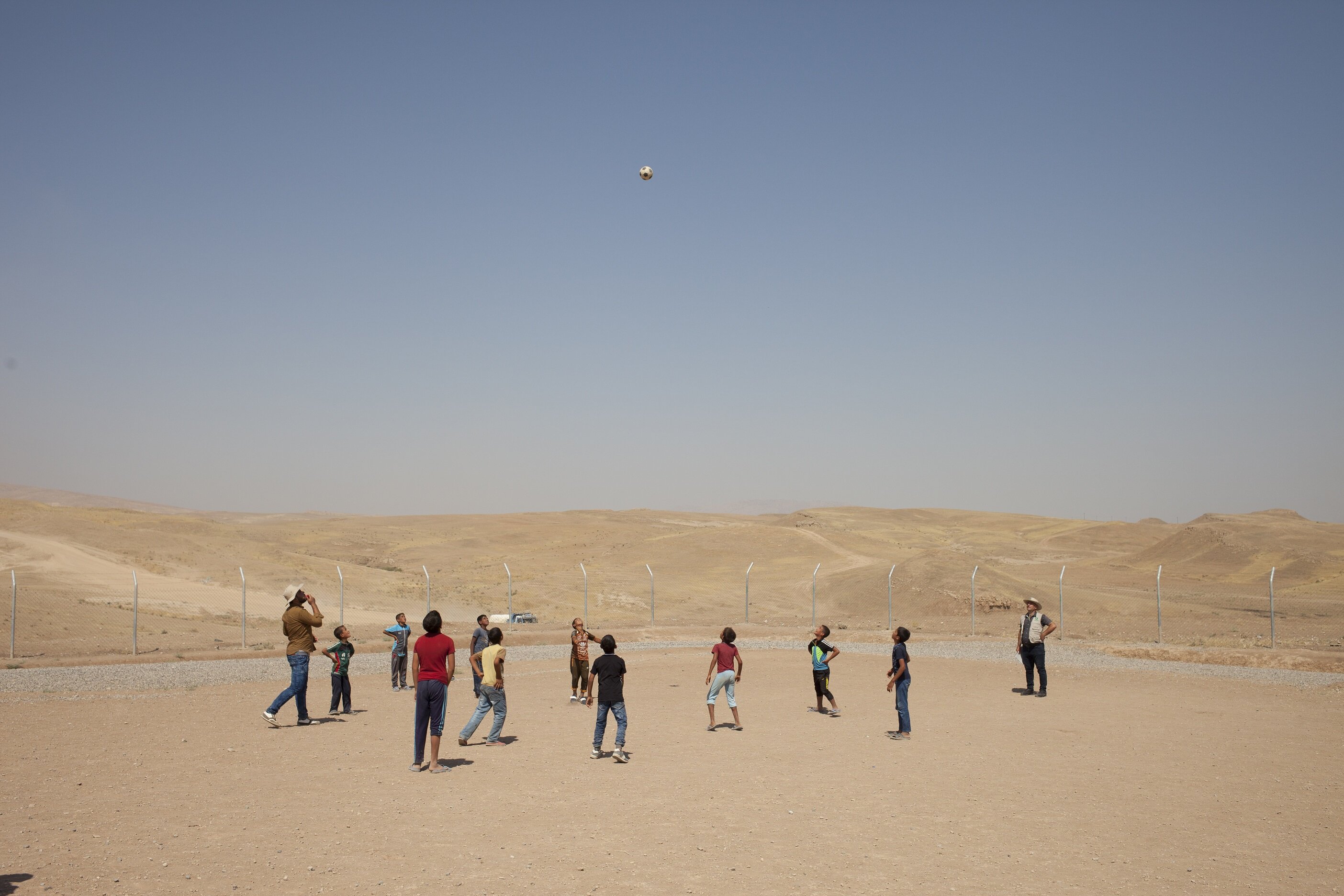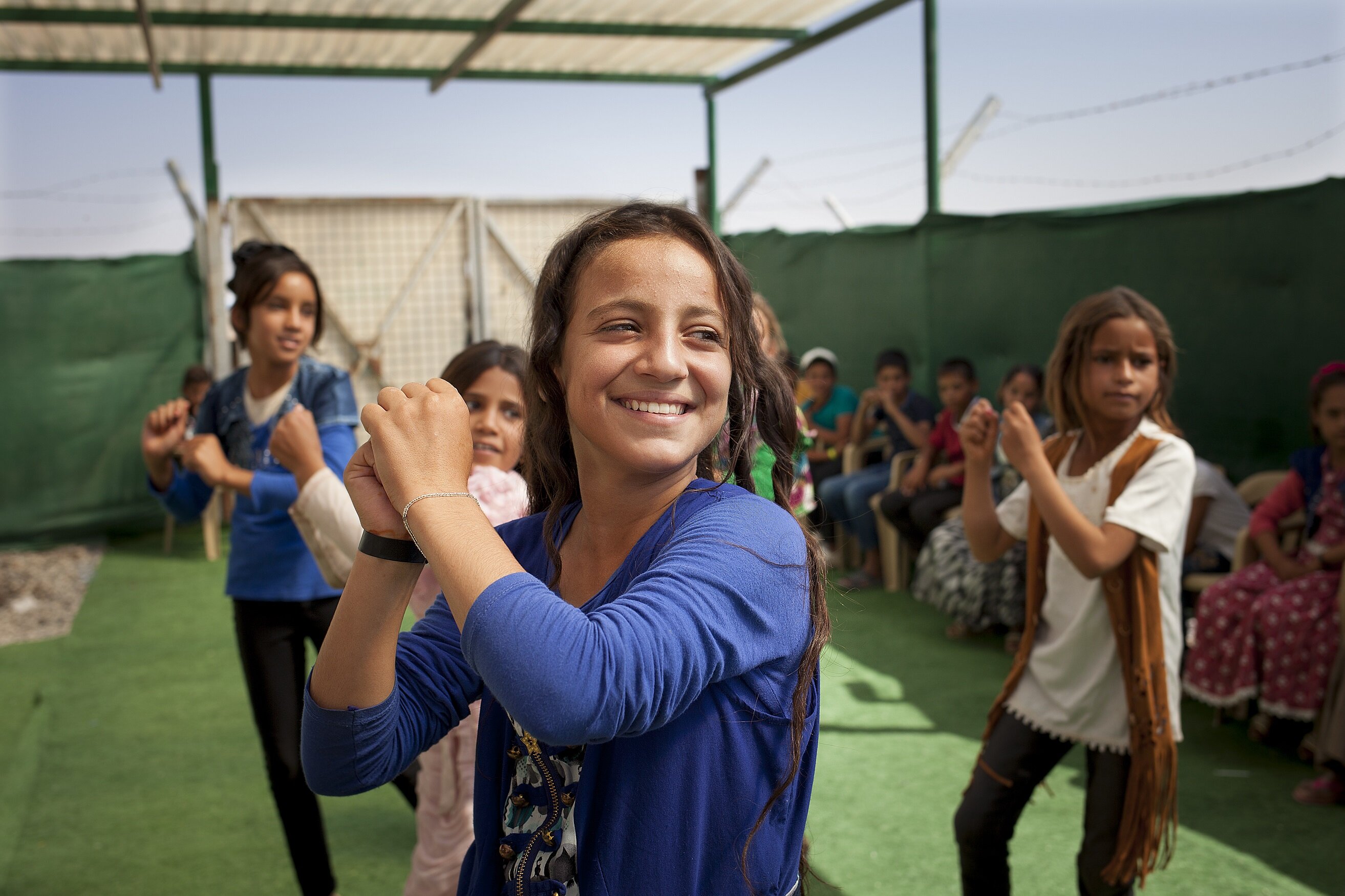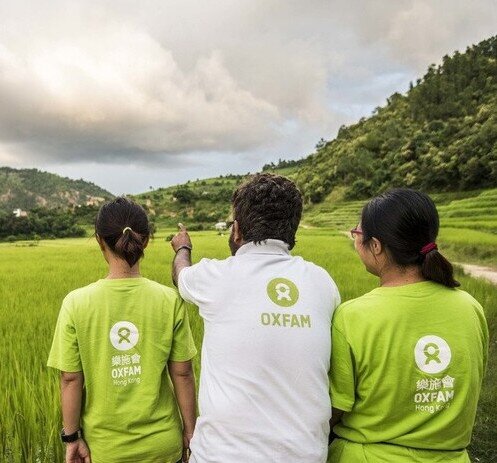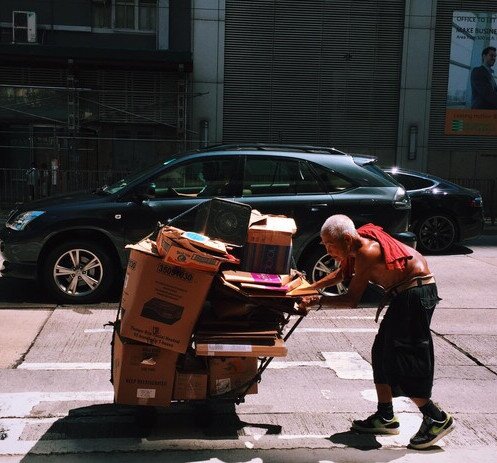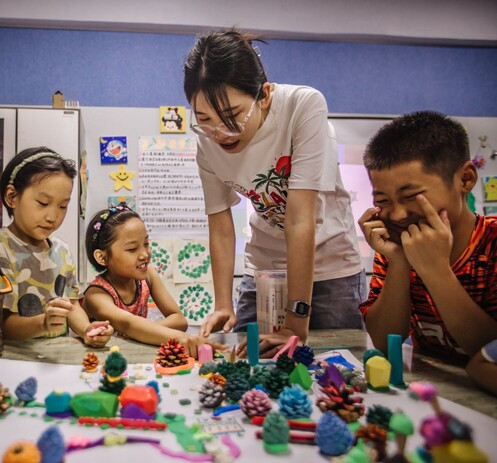Manmade and natural disasters affect disadvantaged communities exponentially more than others. Understanding this, we respond immediately with clean water, food, sanitation and other relief. We also work with communities to prevent future disasters and build back better.
Impact Stories
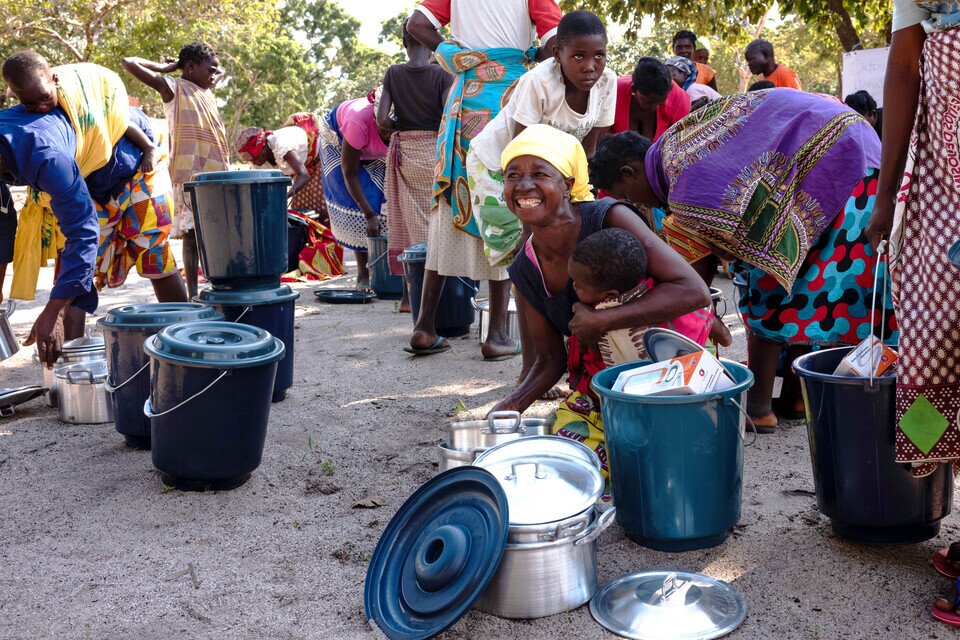
Mozambique & Malawi - Reducing Vulnerability and building Resilience
Caption: People with the hygiene kits and household items they received from Oxfam. (Photos: Ko Chung Ming)
On 14-15 March, Cyclone Idai slammed into Mozambique, Malawi and Zimbabwe, devastating the lives of about 2 million people across the three countries and killing over 1,000. Barely six weeks on, Cyclone Kenneth – the strongest tropical cyclone to make landfall in Mozambique in modern history – tore through northern Mozambique, affecting a further 160,000 and killing 40.
Cyclones the scale of Idai and Kenneth have been far and few between, and the stories people lived to tell were terrifying.
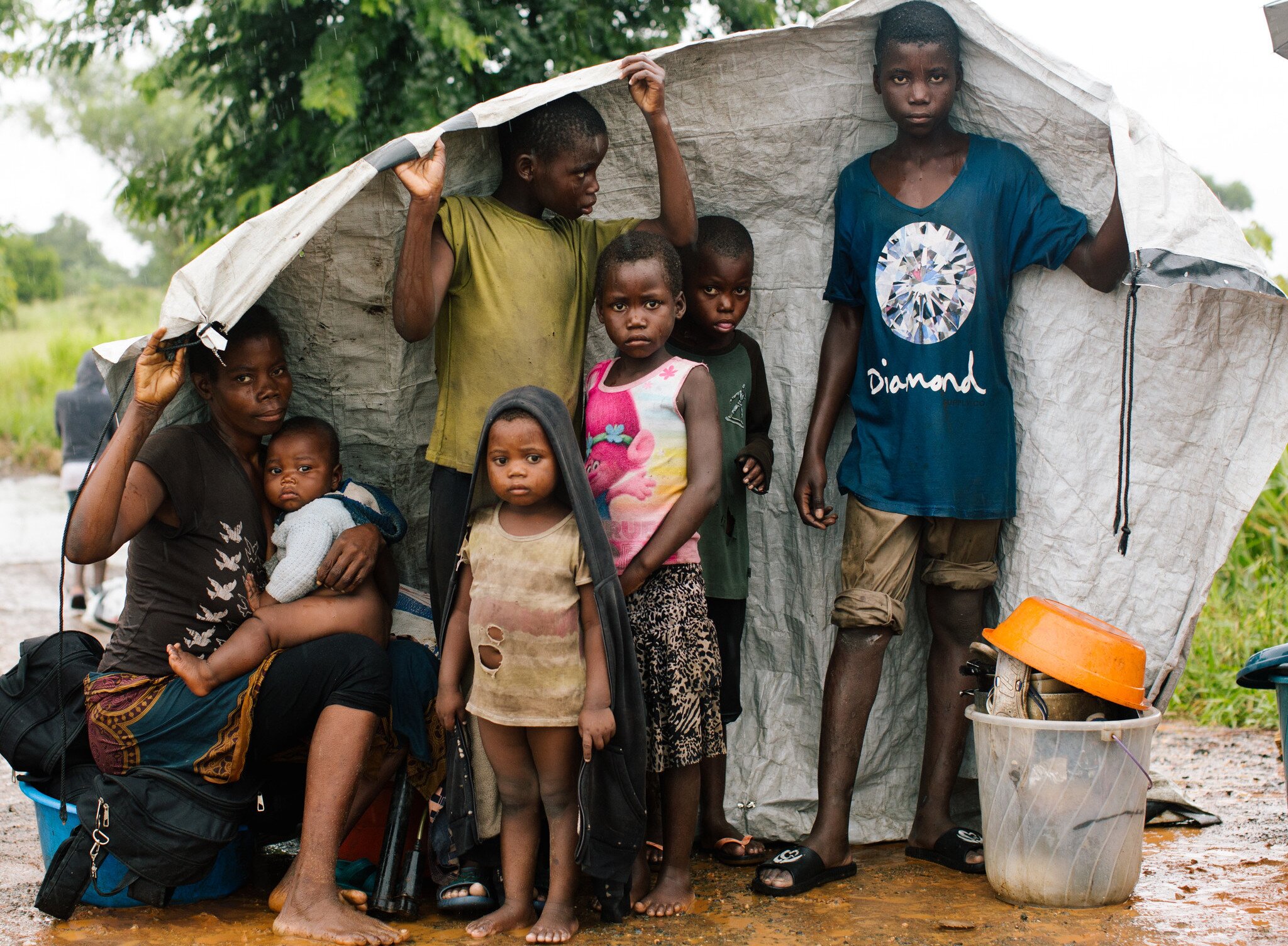

Afonso Joao Felix, 25, who witnessed the forceful winds of Cyclone Idai from Buzi, Mozambique, said: ‘We were scared. We thought we would die that day. Everything was coming down. We were all calling Jesus’ name. I still do not know how all of my family are. I lost everything.’ Afonso is sadly one of the more fortunate as he and his family were able to hide in his mother’s house during the storm, which was one of the few houses in the community that was made of bricks.
In every disaster and conflict – be it in both rich and poor countries – the poorest are most vulnerable and hardest hit. In cities like Beira, one of the most badly affected by Cyclone Idai, the poorest live in flimsy tin shacks, while richer people have houses made of concrete walls, stronger roofs and on higher ground.
Acutely aware of this inequality, Oxfam tries to reach the most vulnerable despite how difficult it is to reach them sometimes. Getting to places like Zambezia, Mozambique took Hong Kong-based staff two international flights and one domestic flight, then five hours by road. Local colleagues in Mozambique and Malawi said that, in places where roads were destroyed, they could only get there by boat and a lot of perseverance. Still, they persisted because months after the disaster, the need was still huge and the relief we distributed clearly made a tangible difference in the lives of survivors.
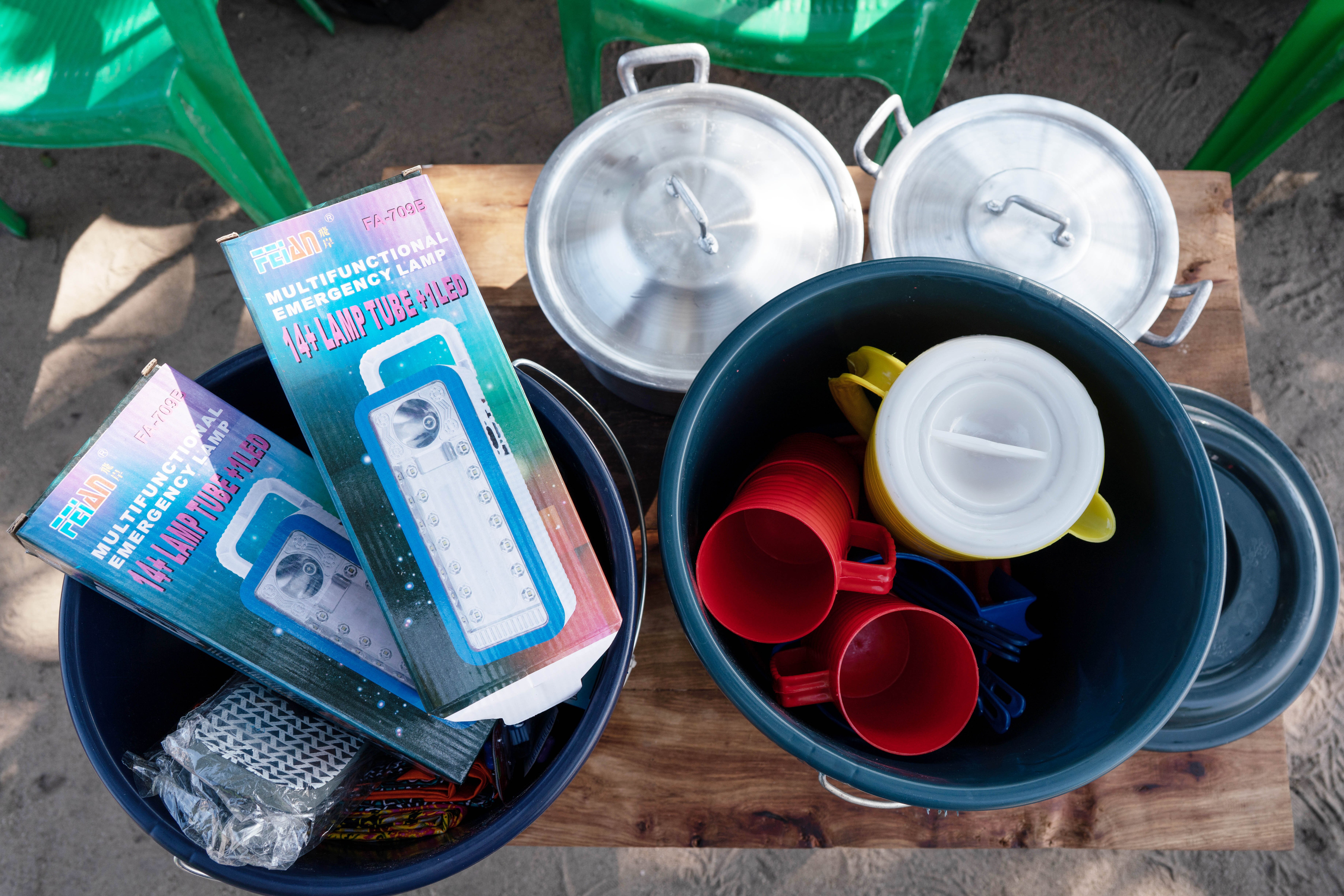
.jpg)
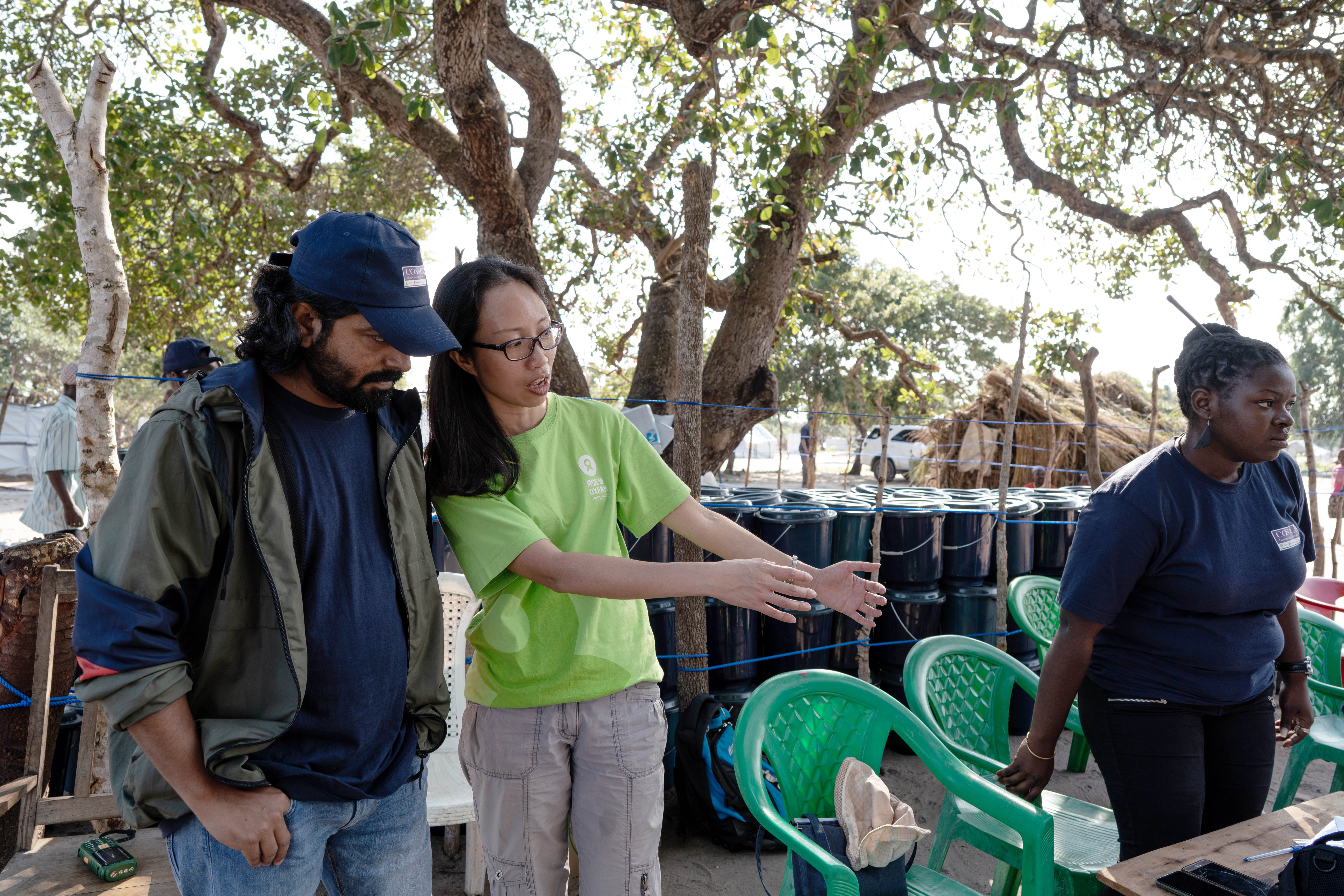
In response to the cyclones, Oxfam not only reached vulnerable communities – those who are most affected – with relief like safe drinking water, food, emergency shelter and hygiene items, but also worked with survivors to recover their livelihoods. Oxfam has also been lobbying governments to reduce emissions to fight climate change, urging for good public policies like universal social protection, and calling on governments to allocate resources where they are needed to enable everyone – not just the fortunate few – to be more resilient to disasters.
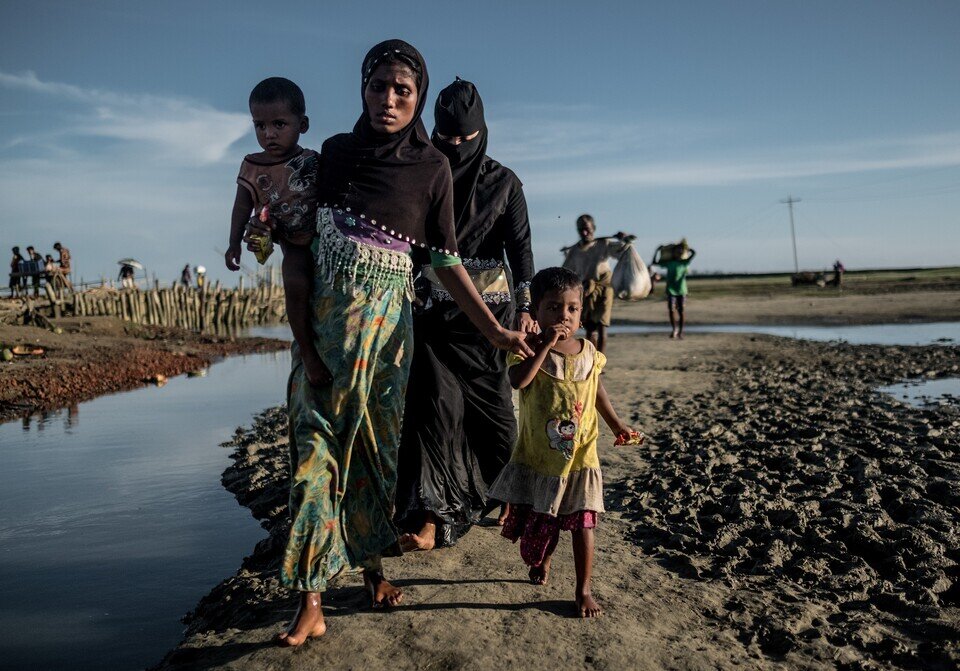
Bangladesh - Reaching Rohingya Refugees
Caption: Countless Rohingya people embarked on a treacherous journey to Cox’s Bazar, each with their own story of escape. (Photo: Tommy Trenchard / Oxfam)
Since late August in 2017, over 670,000 Rohingya fled violence and reached Cox’s Bazar in southeastern Bangladesh from Myanmar. As of 31 March 2018, Oxfam Hong Kong raised a total of HK$3 million to support relief efforts in this area. In November 2017, our staff went to Bangladesh to learn more about the needs of the Rohingya refugees, monitor the progress of our work and make sure every dollar spent was being put to good use.
At the time in the largest settlement area, there were countless tents made of nothing but bamboo and tarp densely packed together stretched across the hills. Those living there didn’t have enough food and clean water, and on average, 20 to 50 families shared one public toilet. The children were hungry, diarrhoea was commonplace, and there was an increasing risk of a disease outbreak.
It was also common to see kids carrying large silver bottles to fetch water in the camp. With the sheer number of refugees who’ve flooded into the camp though, the water levels there have dropped significantly. Through the coordination of the International Organization for Migration and UNHCR, Oxfam has built a water supply system according to the needs of those in several camps, over a thousand latrines in suitable locations, as well as a sewage facility.
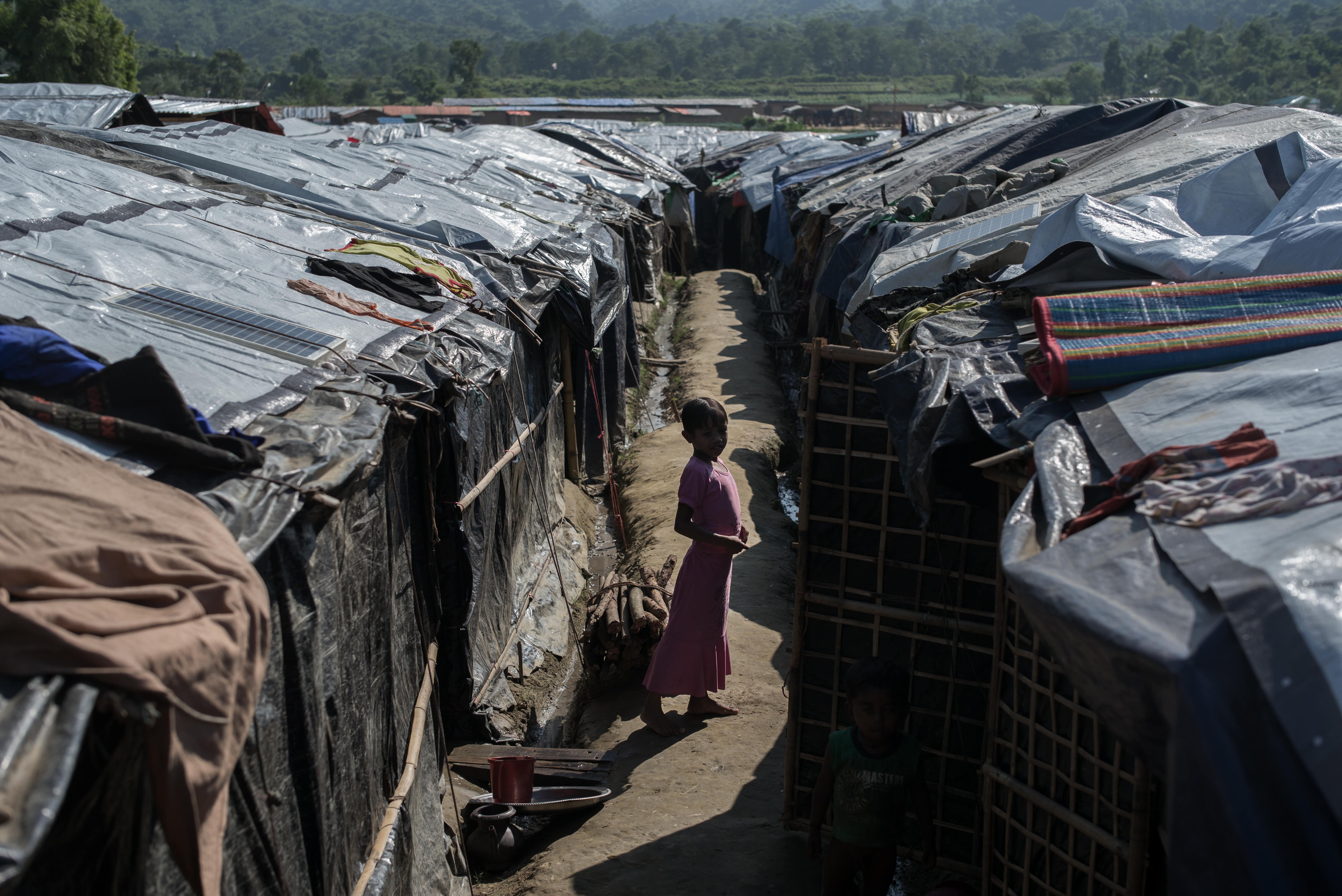
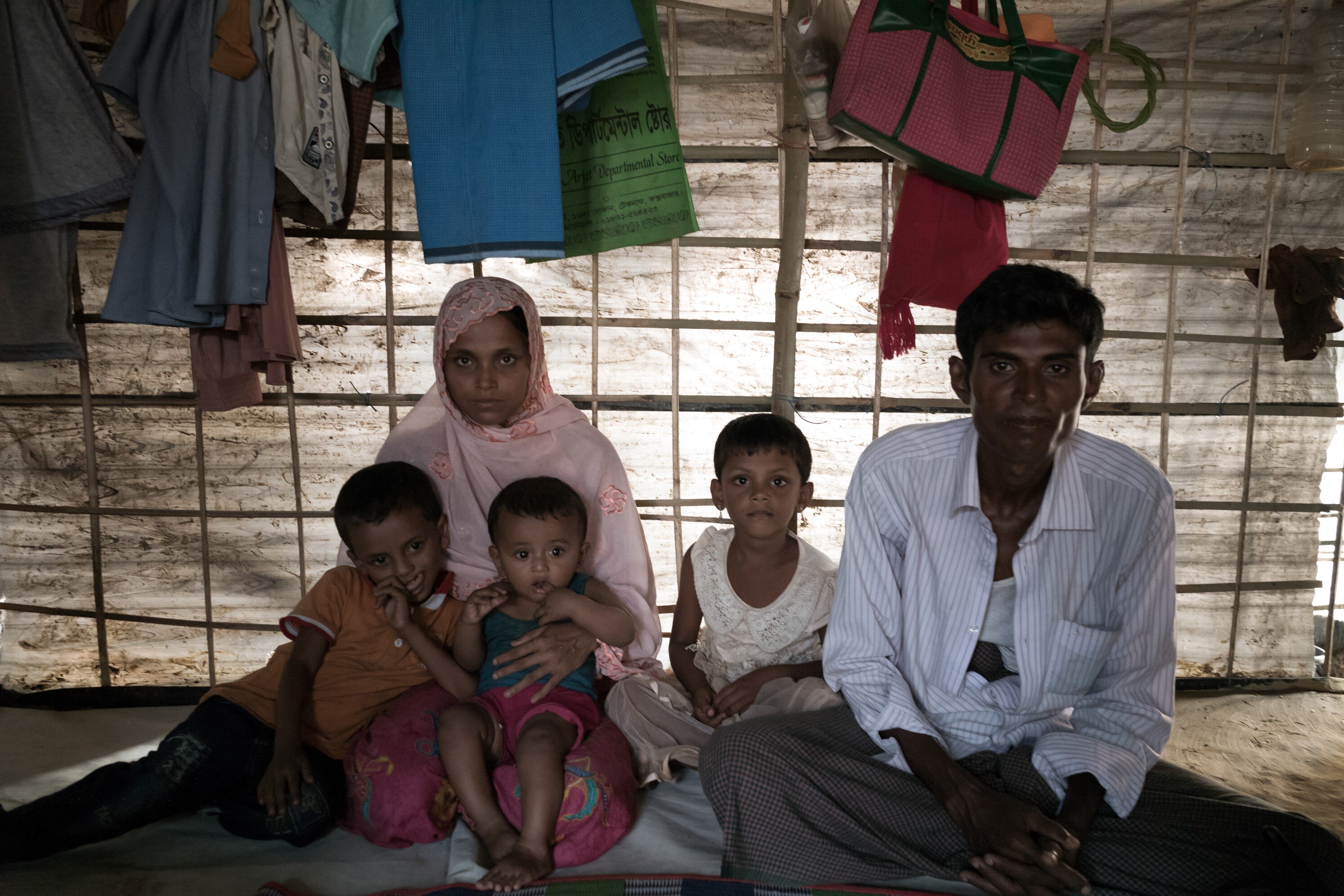
One of the families our colleagues met was Khaleda and his family of five. He suffers from tuberculosis, and when he fled to Bangladesh, others had to carry him because he injured his arms, shoulders and ribs. With very little time to flee, Khaleda and his family weren’t able to bring clothes or food with them. As they were fleeing, his children even suffered from diarrhoea and skin diseases. After his injury, he couldn’t carry anything heavy and could only rely on his neighbours to help him collect relief items.
What’s more, Khaleda’s eight-month-old can only rely on rice and beans for sustenance: ‘Our child isn’t getting enough nutrition, but I try not to think about it. It’s good enough that we have food.’ In fact, one in four children in the camp under the age of five is malnourished. That’s why Oxfam has partnered with local food vendors to launch a food voucher programme to provide nutritious food such as vegetables and eggs to 23,000 families that have special needs. This initiative has enabled refugees to choose the food they want while supporting the local economy.
Elephants that live nearby have also become a threat to refugees in the camp; while they were sleeping, several refugees were unfortunately trampled to death. Without lighting in the camp, it’s difficult for people to evacuate the camp when elephants are near. The lack of light has also made going to the toilet in the evening difficult for women. To combat these problems, Oxfam has installed solar-powered lamps in a number of public areas. We’ve encouraged the refugees there to manage these lamps along with other public facilities, and build a mutual aid network to support one another.
Since September 2017, we’ve reached more than 240,000 refugees. We’re working hard to continue to provide humanitarian assistance to Rohingya refugees and reach even more people with life-saving aid.
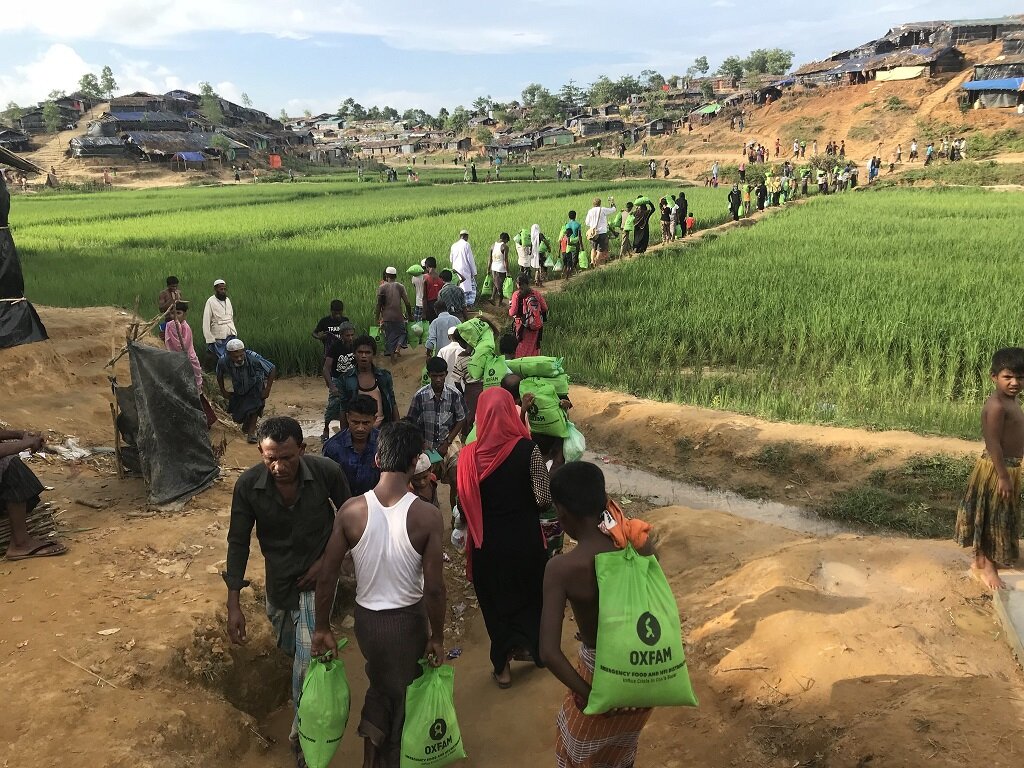
_1613989620.jpg)
_1614050006.jpg)
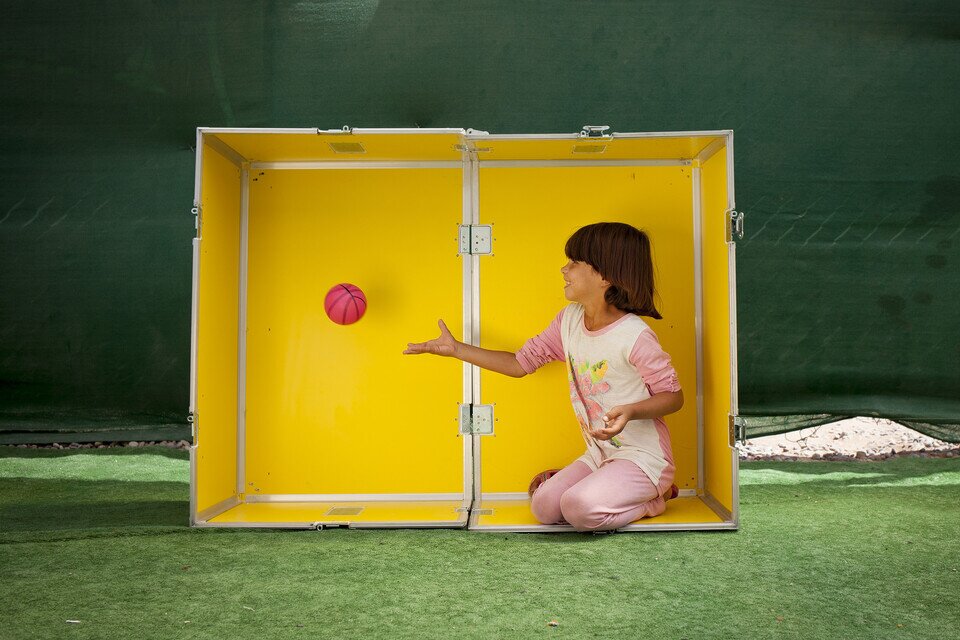
Iraq - Where Kids can be Kids
Caption: The Ideas Box project, which we run in partnership with the charity Libraries Without Borders, helps children in Iraq’s Hassansham refugee camp to learn, play and forget about the devastation they have often lived through. (Photos: Abbie Trayler-Smith / Oxfam)
Yellow, blue and green boxes full of fun line the walls of two caravans in Hassansham camp in Iraq, a camp now home to around 10,000 people who have fled from the conflict to retake Mosul. Since 9 July 2017, the city of Mosul – the second most populated city in Iraq – has been retaken from ISIS by the Iraqi Security Forces.
‘Some of the children arrive in the camp traumatised from what they have seen,’ explains Nigar, Oxfam’s programme officer. ‘But coming to the Ideas Box centre really helps them,’ he said about our latest project in Hassansham camp. The Ideas Box project, which we run in partnership with the charity Libraries Without Borders, helps children in Iraq’s Hassansham refugee camp to learn, play and forget about the devastation they have often lived through.
Walking around the camp, a group of children giggle at Tom and Jerry cartoons in the cinema room. A team of boys play a game of football outside, while a theatre and dance show is being practised on the Astroturf between the cabins.
‘All the children in the camp get to come here and play at least once a week. We have sessions for girls and for boys and each child has a little card they bring with them each time they visit,’ Nigar explains.
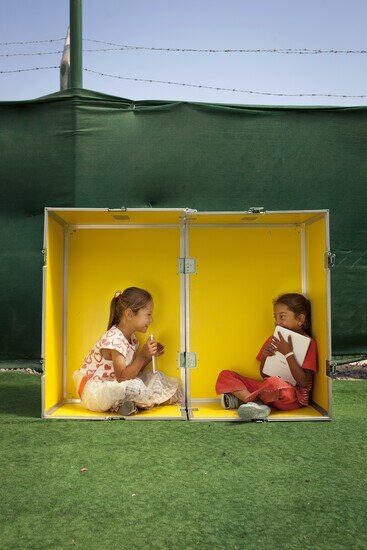
A group of adults from the camp volunteer in the centre to oversee the activities. They gently encourage the children with the games, showing new arrivals how to play. One volunteer leads the football game with the boys, acting as referee and another demonstrates dance routines for the theatre show.
Hassansham camp opened in October 2016 and Oxfam immediately carried out activities such as public health promotion, water trucking, toilet and shower cleaning, distributions of blankets and hygiene items, and referrals to other agencies for things such as medical issues and family reunification.
‘The Ideas Box project is new and it’s causing a buzz in the camp. This project is not just for young children, it’s for older children, teenagers and even adults to learn and play too,’ said Nigar proudly.
